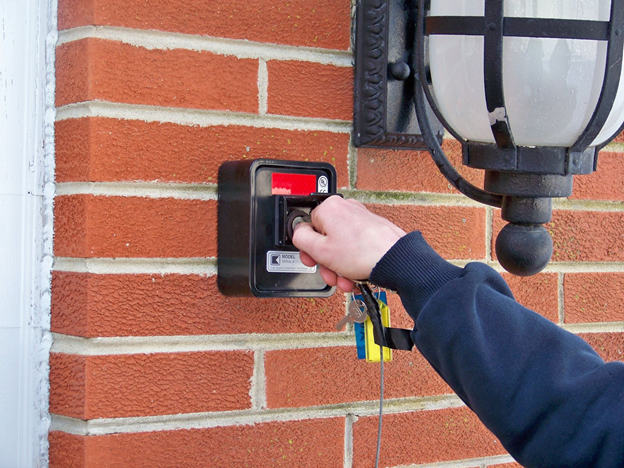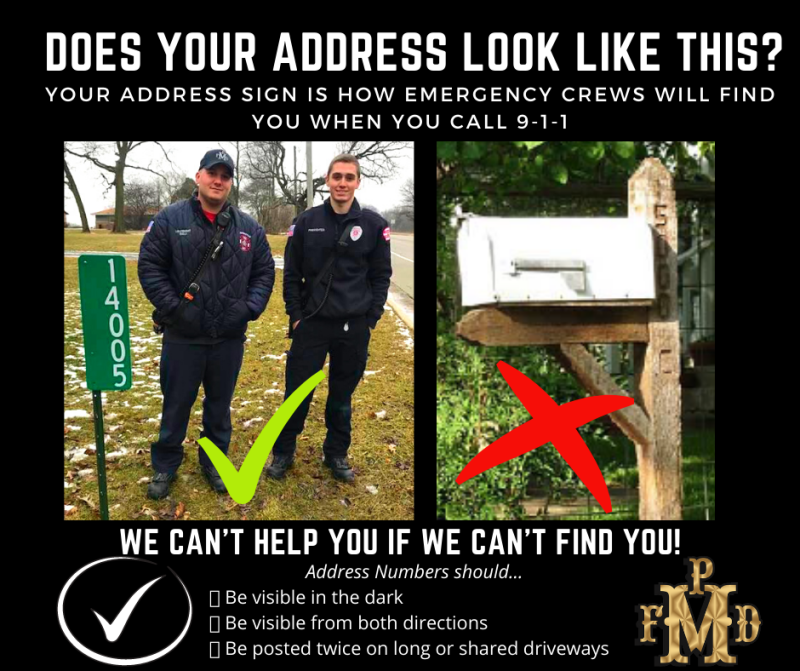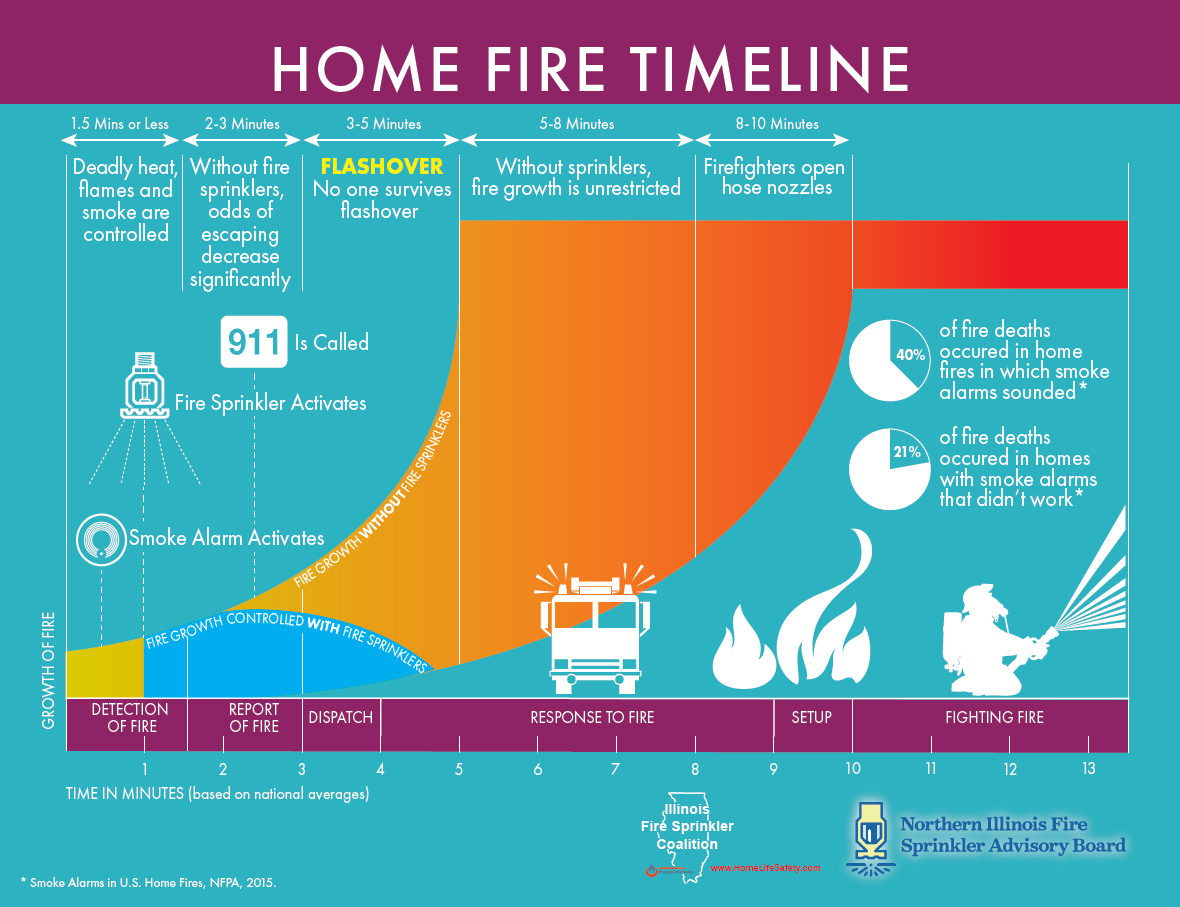Fire Prevention
Barn Fire Safety
Ensure the safety of your barn by following these essential steps to prevent fire hazards and ensure a
safe environment for both workers and animals.
Brycer
The Manhattan Fire Protection District has engaged Brycer, LLC to assist in receiving, reviewing, and maintaining records of inspections, testing, and maintenance of any fire protection and life safety system.
Commercial & Residential Knox Boxes
Knox Boxes help firefighters and paramedics access homes when responding to an emergency situation. Every second counts and having keys available helps reduce delays and allows rapid entry to begin emergency care.
The Manhattan Fire Protection District has established Commercial & Residential Knox Boxes for citizens and businesses of the Manhattan Fire Protection District. The objectives of this program are to expedite the paramedics reaching the patient and to minimize or eliminate damage to property by forcible entry.
Knox boxes can be purchased through the fire district for $231.
The loaner program may be an option for residents experiencing financial hardship. Any other questions contact the Fire Prevention Bureau at 815-478-3197 or Fireprevention@manhattanfire.org

Residents meeting the following criteria are eligible for the program.
1. The Knox Box can only be used for a Manhattan Fire Protection District resident living within the Fire District.
2. An individual with an existing medical or physical condition that could render him/her unable to open a locked door in an emergency situation.
Obtaining a Residential Knox Box
1. Individuals must meet the existing condition criteria.
2. Contact the Fire Department at (815) 478-3197 to determine if a Knox box is available for purchase and to make an appointment
3. Fill out the form and sign the paperwork. If a box is available, the Knox box must be paid for at that time.
(Cash or Check accepted. Make checks payable to Manhattan Fire Protection District).
4. Bring the required residence keys to the Fire Department.
5. The Fire Protection District will install the Knox box on an approved entrance door.
To obtain a commercial Knox Box for your business, please contact the Fire Prevention Bureau at 815-478-3197 or Fireprevention@manhattanfire.org
Rural Address Sign Program
Did You Know: Posting your address is required by the Will County Street Address System Ordinance?
If you live in unincorporated areas of Will County, your address number should be displayed as follows:
- Numbers should be white, reflective, and a minimum of 3-inches in height.
- Displayed on contrasting color background.
- The sign may be mounted to a post OR a mailbox at least 5 feet high above the grade of the roadway.
- The sign must be plainly visible from either direction when approaching your driveway.
- The sign must be adjacent to the driveway it services.
- Address signs should be posted twice on long or shared driveways.
Are you in need of a new reflective address sign?
Materials to make a reflective sign can be purchased at a local hardware store or can be ordered from a sign company. Manhattan Fire Protection District now offers reflective green 911 signs for $20.00. Orders can be placed over the phone or in person.
Questions?
Contact Fire & Life Safety Educator Jackie O’Hara at johara@manhattanfire.org.

Fire Sprinklers in Homes
Although we protect our businesses from fire, what actions do we take to protect our families, our homes, and our possessions from a fire? Millions of Americans have installed smoke alarms in their homes in the past few decades, but a smoke alarm can only alert the occupants to a fire in the house- it cannot contain or extinguish a fire. Residential sprinkler systems can!
Fires in residences have taken a high toll on life and property. In 2010 there were:
- 362,100 residential building fires
- 2,555 civilian fire deaths
- 13,275 civilian fire injuries
- $6.6 billion in property damage
Studies by the Federal Emergency Management Agency’s United States Fire Administration indicate that the installation of home fire sprinkler systems could have saved thousands of lives; prevented a large portion of those injuries, and eliminated hundreds of millions of dollars in property losses.
Using quick response sprinklers and approved piping, homes can be built or even retrofitted to include low-cost automatic sprinkler systems connected to the domestic water supply.
Sprinkler systems offer advantages to the homebuilder:
- A low-cost reliable safety option that would attract many buyers.
- Trade-offs between sprinklers and code requirements can result in lower construction costs, more units per area of land, etc. (5 to 15 percent)
- For homeowners, the advantages include assurance of a safer environment for their families, protection of their investment and irreplaceable family possessions, and lower insurance rates of 5 to 15 percent.
Fast Response
Residential sprinklers, listed by Underwriters Labs, are now available. They are designed to respond to a fire much faster than standard commercial and industrial sprinkler systems. The new home sprinklers react automatically to fires more quickly because of the improved sensitivity.
Low Cost
At the present time, the cost of a home sprinkler system is targeted at approximately $1.61 per square foot in new construction. It is hoped that the cost will decrease as the use of home fire protection grows. It is also possible to retrofit existing homes with sprinkler systems.
Small Size
For residential systems, the sprinklers will be smaller than traditional, commercial, and industrial sprinklers, and can be aesthetically coordinated with any room décor.
Minimal Installation Work
When homes are under construction or being remodeled, a home sprinkler system will require minimal extra piping and labor.
Low Water Requirement
These systems will require less water than the systems installed in industrial or commercial establishments and can be connected to the domestic water supply.
A Growing Number of Communities Promote Home Fire Sprinklers
The fire loss in this country in residential occupancies is alarming. Manual firefighting methods are not the answer. The way to attack the problem is to limit the fire growth where it occurs in dwellings. We have the technology to do that.

Home Fire Risk in One- and Two-Family Homes
Six people die in home fires every day. According to the National Fire Protection Association (NFPA) Fire Loss in the U.S. During 2020, home fires caused:
- 2,230 civilian fire deaths, 85% of all residential fire deaths.
- 8,600 injuries.
- $6.8 billion in direct property damage.
Today’s one- and two-family homes are dangerous for residents and first responders (UL/NIST), burning faster and failing quicker (even collapsing). A home fire can become deadly in as little as two minutes. Homes burn faster due to modern home furnishings, more open spaces and unprotected lightweight wood construction.
Home Fire Mitigation
Fire sprinkler technology has been protecting a wide range of structures for more than a century, but their use has been slow to catch on in homes. The NFPA found that sprinklers were present in only 7% of 2021 home fires. Only California, Maryland and Washington, D.C. require statewide installation of sprinklers in new-home construction.
Broader installation of home fire sprinklers would save thousands of lives (USFA). Installing home fire sprinklers uniquely protects residents, property and the firefighters who respond to fires in these structures. According to the NFPA, the 2021 civilian fire death rate was 89% lower in structures with installed fire sprinklers. The rate of firefighter injuries was 60% lower in fires with sprinklers than in fires without sprinklers.
Home Fire Activation
If a fire occurs, the sprinkler closest to it activates automatically, in response to the high heat from a fire. That controls (often extinguishes) the flames, reduces the spread of toxic and damaging smoke and provides time for occupants to escape. When sprinklers are present, fire is kept to the room of origin 96% of the time (NFPA). In most home fires, only one or two sprinklers will control the blaze. In fires in unsprinklered homes, the toxic smoke spreads widely and more area is exposed to heat, smoke, and fire. This requires more water to be used for suppression with powerful fire department hoses. This greatly increases water and fire damage to the structure and contents.
First Responders
Installing home fire sprinklers helps communities in many ways, including protecting first responders from fire and exposure hazards. Today’s home fires are dangerous for firefighters as well as occupants. Firefighters are 11 times more likely to be injured fighting structure fires; 87% of their injuries occur there (USFA 2019). The risk is not limited to fire exposure. Firefighters today face a 9% increase in cancer diagnoses and a 14% increase in cancer-related deaths, compared to the general population in the U.S. (National Institute for Occupational Safety and Health 2017)
Environment
Home fire sprinklers also protect property and the environment. In 2010, FM Global conducted a groundbreaking study of the environmental impact of fire sprinklers. Their research proved that sprinklers are green:
- Greenhouse gas emissions were cut by 97.8%
- Water usage was reduced between 50% and 91%
- Fewer persistent pollutants, such as heavy metals, were found in sprinkler wastewater versus fire hose water
- The high pH level and pollutant load of non-sprinkler wastewater are an environmental concern
In 2021, FM Global reaffirmed this important study, publishing the Environmental Impact of Residential Fires Review, documenting that since 2010:
- 1.8 billion lbs. of greenhouse gases have been emitted into the atmosphere due to the lack of home fire sprinklers.
- Installed home fire sprinklers would have reduced greenhouse gas emissions by 97% to 54 million lbs.
Homebuyers
Today’s homebuyers want smarter homes. In a recent national fire safety survey* of more than 2000 adults of all ages, 86% said fire safety was important as they look to buy a new home. After learning how home fire sprinklers work, 80 percent of millennials, the largest age group buying homes, said they would prefer to buy a home with fire sprinklers.
- HFSC Omnibus survey with Opinium, surveying a nationally representative sample of more than 2,000 US adults.
NFPA Reports:
US Experience with Sprinklers, Marty Ahrens October 2021: https://www.nfpa.org/News-and-Research/Data-research-and-tools/Suppression/US-Experience-with-Sprinklers
Fire Loss in the United States During 2020, Marty Ahrens and Ben Evarts September 2021: https://www.nfpa.org/News-and-Research/Data-research-and-tools/US-Fire-Problem/Fire-loss-in-the-United-States
Plan Submission
For all residential and commercial building plans submission, please contact the Fire Marshal at Fireprevention@manhattanfire.org